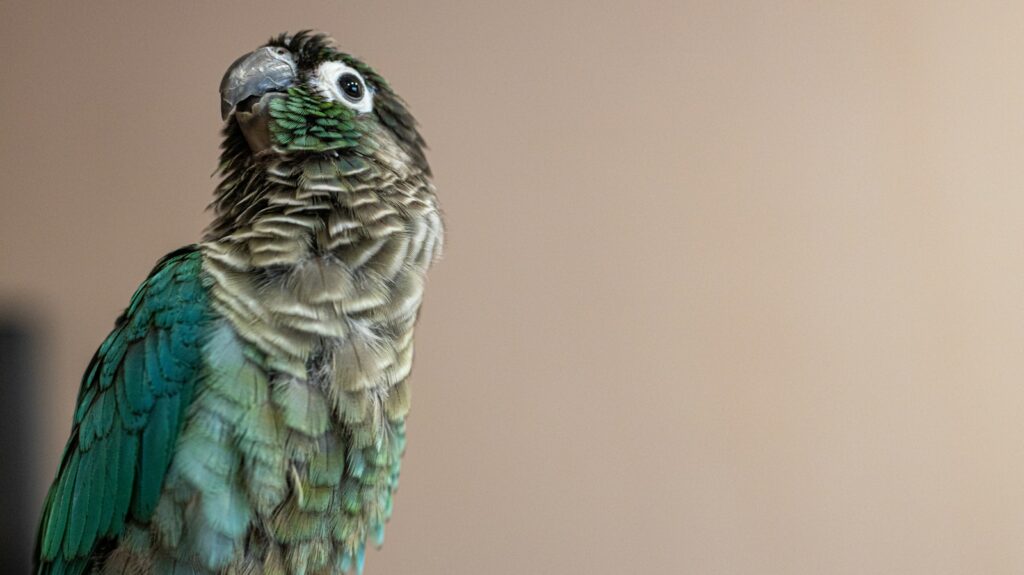into your home, ensuring their comfort is paramount to creating a happy and healthy environment. Birds, much like humans, thrive in spaces where they feel safe and cherished. Achieving this comfort involves understanding their unique needs and behaviors, which helps in creating a nurturing atmosphere for your avian companion.
“A comfortable bird is a healthy bird,” avian experts often say. This sentiment underscores how pivotal it is to make your bird’s wellbeing a priority.
- The right habitat
- Proper nutrition
- Emotional stimulation
- Regular health check-ups
How can I make my pet bird feel safe and secure?
Creating a sense of security for your pet bird begins with its living environment. Place your bird’s cage in a quiet, low-traffic area of your home to help it feel more secure. Avoid positioning the cage too close to windows or in front of doors where there might be sudden movements or drafts.
Provide a Spacious Cage: Ensure the cage is spacious enough for your bird to move freely, stretch its wings, and explore. Include perches at different heights and angles to mimic a more natural environment. This simulates the variety found in their wild habitat, giving them both comfort and exercise.
Cover the Cage at Night: Birds require a consistent day-night cycle for their well-being. Covering the cage at night helps your bird feel safe and aids in providing the 10-12 hours of uninterrupted sleep they need.
Introduce New Birds Gradually: If you introduce a new bird, do so in stages. Start with separate cages that allow visual contact but prevent direct interaction. Gradually increase their supervised interaction over time. This careful approach reduces stress and fosters positive relationships.
Additionally, keep the cage clean and hygienic. Regular cleaning prevents the buildup of harmful bacteria and makes the environment fresh and welcoming for your feathered friend.
Minimize Stressors: Birds are sensitive to changes in their environment. Keeping a consistent routine for feeding, playtime, and cleaning helps reduce stress. Make sure to approach your bird gently and speak in soft, calming tones to build trust and reassurance.
Lastly, be mindful of potential dangers in the house. Ensure the area around the cage is free from toxic plants, ceiling fans, and other household hazards. Supervising free-flying time and creating a bird-proof room can significantly increase your bird’s safety and comfort.
What are the best cage setups for different bird species?
When setting up a cage for small birds like budgies and canaries, prioritize horizontal space over vertical height. These birds enjoy flying back and forth, so a wider cage with multiple perches at different heights is ideal. Include a variety of toys, such as swings and ladders, to keep them mentally stimulated. Ensure the bar spacing is narrow enough to prevent escape or injury. For medium-sized birds like cockatiels and lovebirds, a cage with a balance of height and width is essential. These birds enjoy climbing and flying short distances. Provide natural wood perches of varying diameters to promote foot health, and include foraging toys to engage their natural instincts. A cage with a playtop area can offer additional space for exercise and interaction.
Large parrots, such as African Greys and Amazons, require spacious cages with ample room for movement. These birds are highly intelligent and need a variety of toys, including puzzle toys and shreddable materials, to keep them occupied. Strong, durable perches and stainless steel bowls for food and water are necessary due to their powerful beaks. Ensure the cage has a secure locking mechanism to prevent escapes. For very large birds like macaws and cockatoos, the cage must be exceptionally robust and spacious. These birds need room to spread their wings fully and climb. Include heavy-duty perches and a variety of enrichment toys to prevent boredom. A play stand outside the cage can provide additional space for exercise and social interaction. Regularly rotate toys to keep their environment stimulating.
Finches and other small, flighty birds thrive in aviary-style cages that offer plenty of vertical and horizontal space. These cages should have multiple perches and branches to mimic a natural environment. Provide nesting materials and small toys that encourage natural behaviors. Ensure the cage is placed in a quiet area to reduce stress and promote a sense of security.
How often should a pet bird’s cage be cleaned?
Maintaining a clean cage is crucial for the health and happiness of your pet bird. Daily cleaning tasks should include removing uneaten food, changing the water, and cleaning any obvious messes such as droppings on perches or toys. This prevents the buildup of bacteria and mold, which can be harmful to your bird. In addition to daily maintenance, a more thorough cleaning should be performed weekly. This involves removing and washing all perches, toys, and dishes with bird-safe disinfectant. The cage bottom should also be scrubbed to remove any stuck-on debris. Ensuring that all items are thoroughly rinsed and dried before returning them to the cage is essential to avoid any chemical residue.
| Cleaning Task | Frequency | Details |
|---|---|---|
| Replace liners | Daily | Ensures droppings are cleaned up promptly to maintain hygiene |
| Clean perches, toys, and accessories | Weekly | Prevents buildup of bacteria and ensures toys remain safe and engaging |
| Scrub the cage | Monthly | Deep cleaning with bird-safe disinfectant to remove grime and prevent disease |
| Change food and water | Twice daily | Clean containers and provide fresh food and water to prevent contamination |
| Full cage disinfection | Quarterly | Thorough cleaning and disinfection, including hard-to-reach areas |
What are essential items to include in a bird’s habitat?
A spacious cage is fundamental for your bird’s well-being. Ensure the cage is large enough to allow your bird to spread its wings fully and move around comfortably. The bars should be appropriately spaced to prevent escape or injury, and the material should be non-toxic and durable. Perches of varying diameters and textures are crucial for your bird’s foot health. Natural wood perches are ideal as they mimic the bird’s natural environment and help maintain their claws. Place perches at different heights and locations within the cage to encourage movement and exercise.
Birds need mental stimulation to prevent boredom and behavioral issues. Provide a variety of toys such as bells, mirrors, ropes, and puzzle toys. Rotate these toys regularly to keep your bird engaged and curious. A balanced diet is essential for your bird’s health. Include a mix of high-quality bird pellets, fresh fruits, vegetables, and occasional seeds. Ensure that fresh water is always available and change it daily to maintain hygiene. Birds enjoy having a designated area for bathing. Offer a shallow dish of water or a bird bath within the cage. Some birds prefer misting with a spray bottle, so observe your bird’s preference and provide regular opportunities for them to clean their feathers.
Proper lighting is vital for your bird’s health, as it influences their circadian rhythm and vitamin D synthesis. Place the cage in a well-lit area, but avoid direct sunlight and drafts. Consider using a full-spectrum UV light designed for birds if natural light is insufficient. Birds are social creatures and benefit from interaction. Place the cage in a part of the home where the bird can observe and interact with family members. However, ensure the environment is calm and free from potential stressors like loud noises or sudden movements. Cage liners or substrates help maintain cleanliness and make it easier to spot health issues through droppings. Use bird-safe materials like paper towels, newspaper, or specially designed bird cage liners. Avoid using sandpaper or other abrasive materials that can harm your bird’s feet.
A secure and comfortable sleeping area is important for your bird’s rest. Cover the cage at night with a breathable cloth to create a dark, quiet environment, or provide a bird tent or hut inside the cage. Ensure the sleeping area is free from drafts and disturbances.
How can you provide mental stimulation for pet birds?
One effective way to provide mental stimulation for pet birds is through the use of interactive toys. Toys that require problem-solving, such as foraging toys where birds have to work to get treats, can keep them engaged and mentally active. Rotating toys regularly can also prevent boredom. Training sessions can be both mentally stimulating and a great way to bond with your bird. Teaching your bird new tricks or commands, such as stepping up, waving, or even more complex behaviors, can challenge their intellect and provide a sense of accomplishment.
Providing a variety of perches with different textures, shapes, and sizes can stimulate your bird’s senses and encourage exploration. Natural wood perches, rope perches, and swings can all contribute to a more enriching environment. Social interaction is crucial for a bird’s mental well-being. Spending quality time talking, singing, or simply being present with your bird can provide essential social stimulation. Birds are highly social creatures and thrive on interaction with their human companions.
Environmental enrichment can also play a significant role in mental stimulation. Rearranging the cage setup, introducing new objects, or even allowing supervised out-of-cage time in a bird-safe room can provide new experiences and challenges for your bird. Playing music or nature sounds can be mentally stimulating for birds. Many birds enjoy listening to different sounds and may even try to mimic them. This auditory stimulation can keep them entertained and engaged throughout the day.
Offering a varied diet with different textures and flavors can also be mentally stimulating. Introducing new fruits, vegetables, and bird-safe treats can encourage natural foraging behaviors and provide sensory enrichment.
In conclusion, creating a comfortable environment for your pet bird involves diligent care and attention to their needs. By ensuring their safety, mental and physical stimulation, and maintaining a clean and well-equipped habitat, you’ll not only enhance their quality of life but also build a stronger bond with your feathered friend. Remember, a happy bird is one that feels secure, engaged, and loved. Your commitment to their well-being will be richly rewarded with their vibrant presence and joyful companionship.



